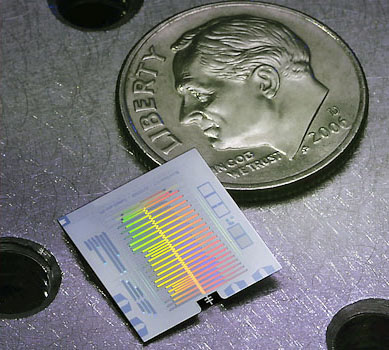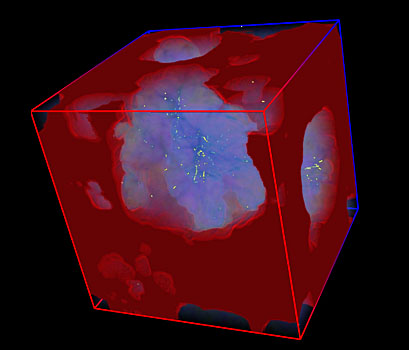 |
 |
 |
 |
 |
 |
 |
 |
 |
 |
 |
 |
|
Talks & Events
|
Faculty Research Seminars: 2014
Resonances and Chaos in the Non-Linear Pulsations of Stars TBA CANCELLED Superconducting detectors and the astronomical instruments of tomorrow In the last decade, we've seen exponential improvements in the sensitivity of instruments for CMB and submm-wavelength science. Today, multichroaic cameras with hundreds of kilopixels and densely packed integral field unit spectrometers are being designed. I'll discuss one of the key technologies that makes these instruments possible: cheap, scalable, lithographically defined superconducting detectors. I'll introduce both transition edge sensors and kinetic inductance detectors, and the benefits and limitations of each, and discuss a few novel devices that make use of the non-linear response of the kinetic inductance effect. Finally, I'll highlight some of the diverse science applications for cryogenic detectors at all wavelengths. George Ellery Hale and the Forgotten Observatories of the University of Chicago George Ellery Hale was a gifted child, who took an early interest in science. His parents, William and Mary Hale, encouraged and supported his scientific interests and activities in generous and remarkable ways. George was a mature student of astronomy and spectroscopy by the time he began undergraduate studies at MIT in 1886. With his invention and initial applications of the spectroheliograph, during his undergraduate years, George Hale established his reputation as a serious astronomer. In 1892, two years after his graduation from MIT, he became a 24-year old Associate Professor of Astronomy at the University of Chicago. In the decade that followed, he effectively founded our Department of Astronomy and Astrophysics, oversaw the construction of the Yerkes Observatory, organized the "World Congress of Astronomy, Astro-Physics, and Mathematics" at the 1893 Columbian Exposition, established the Astrophysical Journal, and played a leading role in the establishment of the American Astronomical Society. Then and subsequently, Hale's vision and activities did much to determine the character and course of American astronomy in the twentieth century. Outreach Opportunities Cosmic Reionization On Computers I will review the field of numerical simulations of cosmic reionization: the process of ionizing of intergalactic medium by high redshift galaxies and quasars. I will describe the main physical processes that are important for modeling reionization, explain how these processes are incorporated in computer simulations, and will use simulations to gain insight into the actual reionization process. I will finish with an illustration of how the exponential increase in the computing power allows us to solve problems that we could not even dream about mere 10 years ago. |



